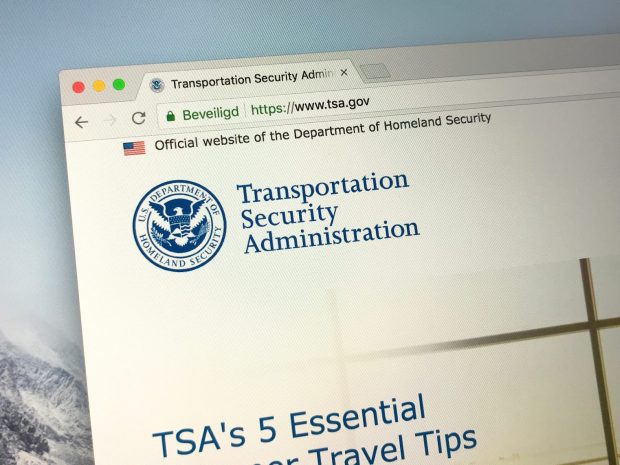The TSA On Leveraging Government-Supported Digital Identities, Biometrics To Enhance Air Travel Experiences

Air travel players have learned first-hand during the pandemic that many of the industry’s long-standing verification practices could use a 21st-century upgrade. In the Digital Identity Tracker, the TSA’s Jason Lim explains how biometrics and government-backed digital ID solutions such as mobile driver’s licenses can offer enhanced security and convenience.
Swiftly and accurately determining that individuals are who they say they are always has been a high priority for air travel, but growing digital security and physical safety concerns are pushing players in the space to reexamine their identification and data privacy practices.
Some agencies are taking steps to introduce new identification methods that include government-supported digital identity tools. The TSA, for example, is moving to support mobile driver’s licenses (mDLs) that can add security and accelerate travelers’ verification experiences, Jason Lim, the agency’s identity management capability manager, told PYMNTS.
“From my viewpoint, the COVID-19 pandemic has fundamentally shifted how TSA must perform its mission,” he said. “We must continue to enhance [the agency’s] security effectiveness while prioritizing the health and safety of TSA officers and the traveling public. Our efforts to automate the identity verification process for travelers through the use of mobile driver’s licenses are supporting the agency’s focus on reducing points of contact for travelers and paving the way for a more seamless travel experience while protecting passenger privacy and civil liberties.”
Supporting mDLs could introduce numerous benefits for air travelers and travel entities, allowing travelers to complete the identification process quickly and safely while strengthening verification security and accuracy for airlines. Doing so at scale requires careful coordination, however.
Digital Identities for a Digital World
Making room for government-supported digital identity solutions is essential as static identification methods’ accuracy and security grow weaker and less reliable. Offering digital versions of standard identity documents means more data can be securely attached to individuals’ profiles without compromising privacy, thus strengthening the ability to authenticate travelers more quickly and accurately.
The TSA is working to upgrade its credential authentication technology (CAT) machines with biometric, digital identity and self-service capabilities — the new machines are known as CAT-2 — to accept digital identity documents at its checkpoints, Lim said. He added that implementing digital identity solutions can ease travelers’ security concerns, as passengers keep state-supported digital ID documents such as mDLs on their phones, giving them more control over the data they send and share.
“Compared to physical driver’s licenses, digital IDs can provide greater security to … parties verifying an individual’s identity, as well as stronger privacy protections and health and safety benefits to all users by enabling touchless identity verification,” he explained. “Travelers always control their mobile devices and are not required to give [them] to a TSA officer. The information from a digital ID is shared with the CAT-2 wirelessly, only with the traveler’s consent. Digital IDs transmit only the necessary information that TSA requests, rather than sharing the entire ID.”
Ensuring these digital identity documents are universally recognized as valid identification methods also requires considerable coordination between government bodies and key players in the air travel space. Lim said the TSA is working with entities such as the American Association of Motor Vehicle Administrators, the Department of Homeland Security Science and Technology Directorate and the National Institute of Standards and Technology to create the governance structure necessary for this goal. He also urged further coordination among industry players, saying it would be necessary to achieve the level of security and convenience to make these tools worthwhile for travelers and entities within the space.
Solidifying the standards for government-supported digital identities is likely to determine their overall success within the air travel industry. It is equally important, however, to consider passengers’ changing views about identity and verification.
Next-Gen Identity Measures and Biometrics
Taking consumers’ perceptions of digital identities into account likely will be key to fostering trust in these solutions and encouraging their adoption. Consumers appear to be warming to digital identity solutions, however, especially when it comes to biometrics. Lim noted that today’s travelers are tech-savvier now that air travel is becoming a more affordable and more frequent experience. Many passengers already are comfortable with biometric or other digital identification tools when they arrive at airports or security checkpoints, he explained.
“Travelers are … increasingly using biometrics such as fingerprint and facial recognition in their daily lives to access their mobile devices, apps and accounts,” he said. “TSA can leverage this trend and adopt passenger-friendly solutions that enhance security and address traveler demand for self-service options that minimize direct interaction with government and airline personnel.”
Pairing biometrics with government-supported digital identities can hold the key to creating robust, secure profiles for travelers, making it easier than ever to verify their identities with less friction. Thus, it is critical for entities to consider how these emerging technologies will affect the air travel space and work to adjust their operations accordingly.
